Spider plants are great to grow at home. They’re not only hardy and easy to grow but can also purify the air of harmful contaminants.
In this guide, we’ll briefly be exploring the different indoor spider plant varieties and their physical features, care needs, and more.
What are the different types of spider plants?
Below are the various species of spider plants that can enhance your home decor:
1) Bonnie Spider Plant
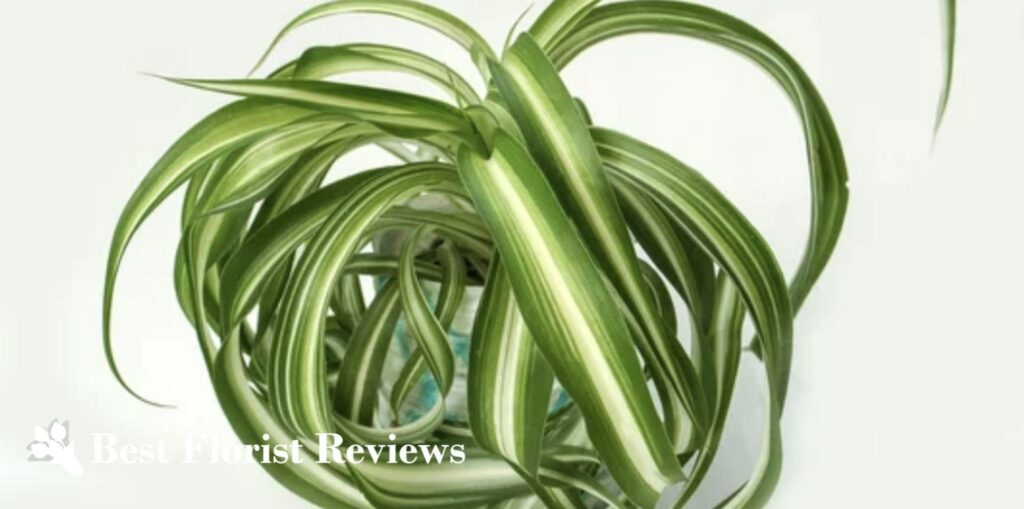

Bonnie spider plant (Chlorophytum comosum ‘Bonnie’) has long leaves with green and white stripes similar to the Vittatum spider plant except that they twist and curl.
Due to this, Bonnie spider plants also go by the name curly spider plants.
Contrary to wild spider plants, the Bonnie spider plant only grows very small from 6 to 8 in. tall in the house.
It prefers plenty of partial or full sun. Therefore, it’s suitable to be set near east or south-facing windows.
The houseplant can also be given 2 to 3 hours of bright sun, but keep in mind that exceeding this exposure time will result in scorched leaves.
Furthermore, it enjoys warm temperatures and moist and well-draining soil. The spider plant must be watered once or twice a week when the topsoil has dried out.
2) Ocean Spider Plant
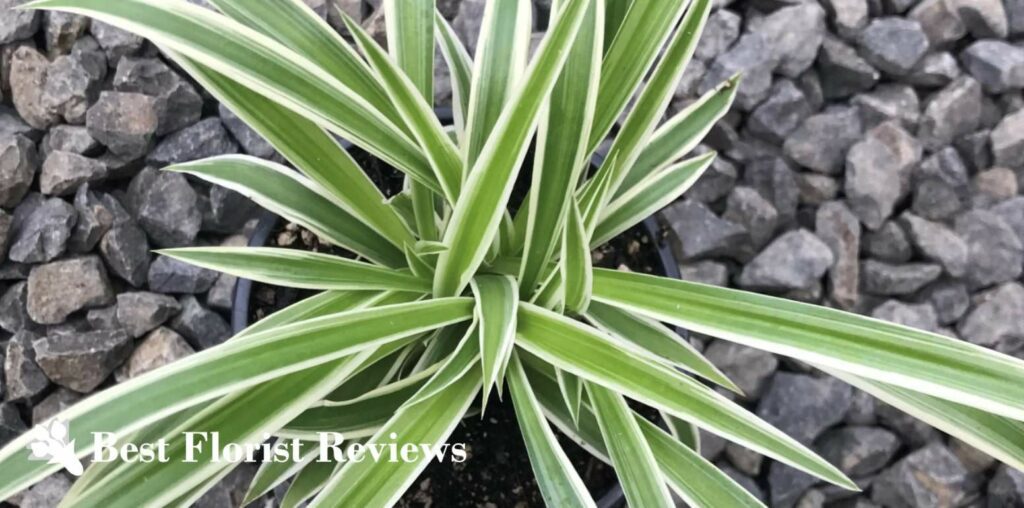

Ocean spider plant (Chlorophytum comosum ‘Ocean’) is a variegated compact spider plant with short and spiky leaves bordered in cream white.
It’s native to the warm and humid coastal areas of South Africa. This explains its preference for partial sun or shade and damp and well-draining soil.
Grown as a houseplant, it can reach up to 18 in. tall at maturity. Most people place it in hanging baskets that showcase its clean appearance.
Taking up less space than other spider plants, this variety is suitable for cramped spots in the house or garden.
Also, in warm summery conditions, the Ocean spider plant can produce star-shaped white flowers and new baby plants from its long stems.
3) Airplane Spider Plant
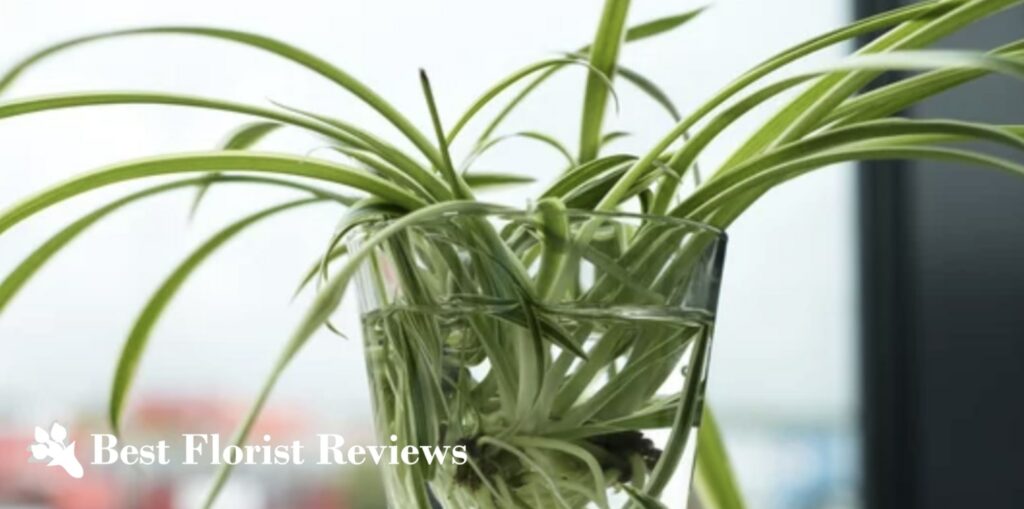

Airplane plant (Chlorophytum comosum ‘Variegatum’) is a unique and subtly beautiful variety of spider plants.
It features moderately curved and tapering green leaves with white margins.
Upon closer inspection, the plant has streaks of lime and dark green in the center of its leaves. This plant is also called reverse variegated spider plant.
Compared to other spider plants, an adult Airplane plant can grow up to 24 in. tall indoors.
It’s very easy to care for since it merely needs partial sun and regular watering once a week.
While it can withstand low-lit conditions, its leaves won’t grow as stable or healthy as if it gets the required light supply.
4) Fire Flash Spider Plant
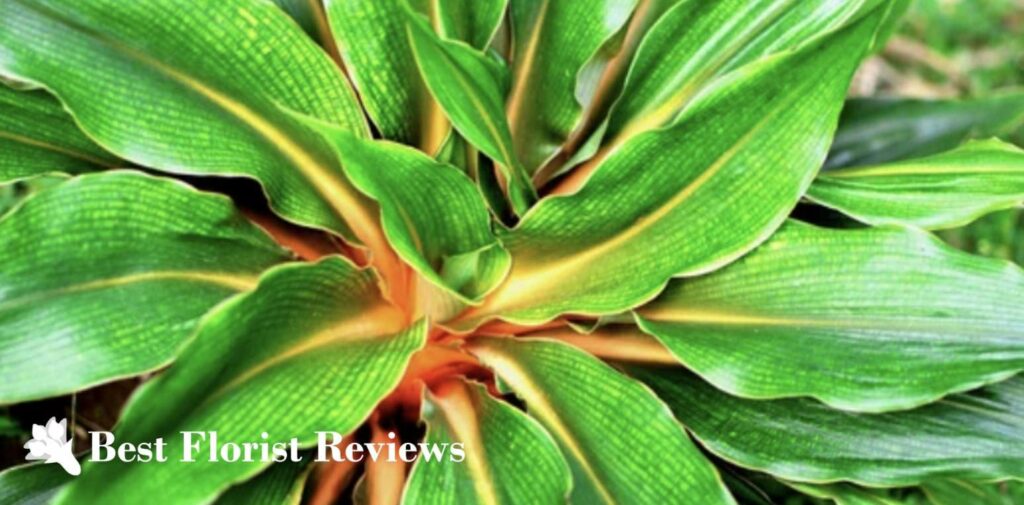

A stunning and rare variety, the Fire Flash spider plant (Chlorophytum orchidastrum) has wavy, lance-shaped leaves held by thick orange stems.
The plant can bear small white flowers in loose clusters. However, they only last up to a week.
One of the smaller spider plant species, its maximum height and spread is only 12 in. as an indoor plant.
It grows in the tropical and subtropical regions of West and South Africa.
The much-sought-after plant only needs partial sun. Keep it out of direct afternoon sun, as the heat can burn and brown the leaves.
It also has strong and thick roots that allow it to store water. This makes it a drought-tolerant plant.
Still, you have to water the plant deeply until it’s moist once per week. It will also benefit from regular misting to prevent drying up in the hot summer months.
People sometimes refer to the Fire Flash spider plant as the Orange spider plant.
5) Bichetii Grass Spider Plant
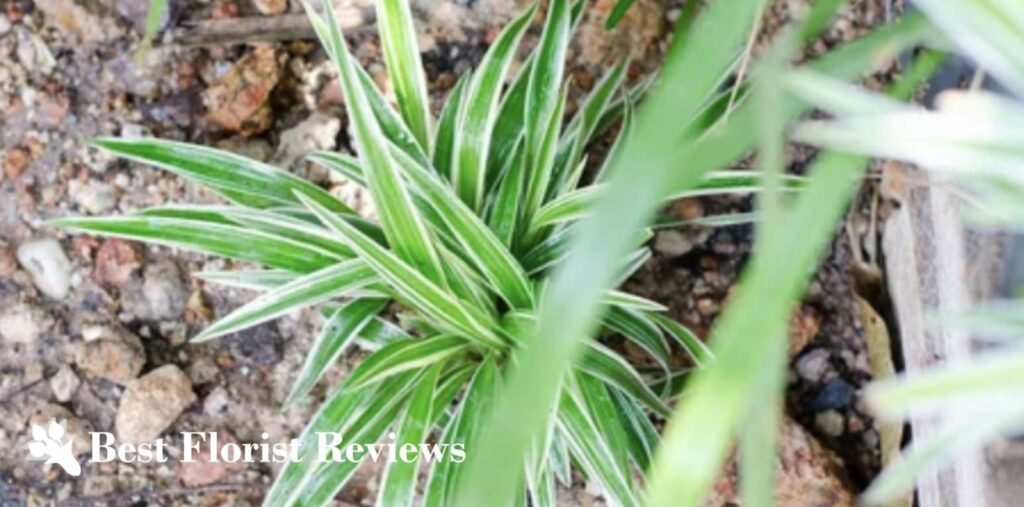

Native to tropical Asia, Africa, and Australia, Bichetii Grass spider plant (Chlorophytum bichetii) is a common sub-variety of the Chlorophytum laxum.
It has narrow, grass-like, and arching leaves with cream-white margins. Unlike its relatives, it doesn’t produce side shoots or branches.
It’s a very low-maintenance plant and suits gardeners that are just starting out.
To care for the Bichetii Grass, locate it in a place where it receives an ample supply of partial sun.
It doesn’t have to be watered or fed with fertilizer often. Once a month of watering and a spoonful of fertilizer will suffice for it.
This spider plant is excellent at detoxifying the air of discomfort or illness-causing chemicals.
On top of that, it isn’t toxic to touch or ingest, making it a safe plant around children and pets at home.
6) Zebra Grass Spider Plant
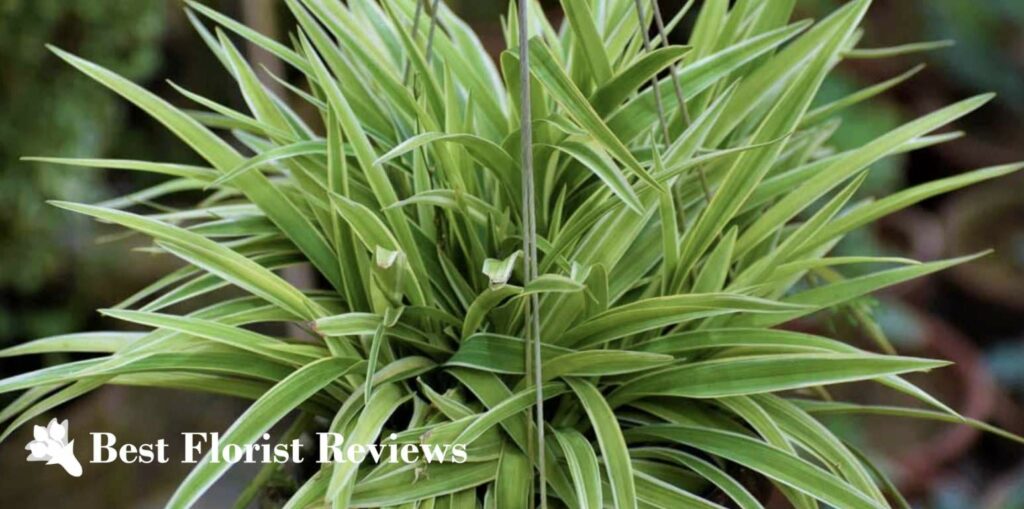

Zebra Grass spider plant (Chlorophytum laxum) is a clumping perennial plant native to tropical Africa.
It displays tightly clustered, sharp leaves with cream-to-white borders. When it matures, the plant looks quite unkempt compared to other spider plants.
It matures fast and can reach 8 to 12 in. tall and 18 to 24 in. wide.
Indoors, Zebra Grass spider plants can be planted in pots, hanging baskets, and backyard gardens.
It’s excellent at filtering the air of pollutants such as formaldehyde, toluene, and xylene, according to the NASA clean air study.
Also, Zebra Grass spider plants don’t demand too much care from their owners.
As long as they get enough partial or full sunlight and watering, these plants will flourish.
In fact, they can still look good for a while in darker environments and can thrive even with a bit of watering neglect.
7) Variegated Bonnie Spider Plant
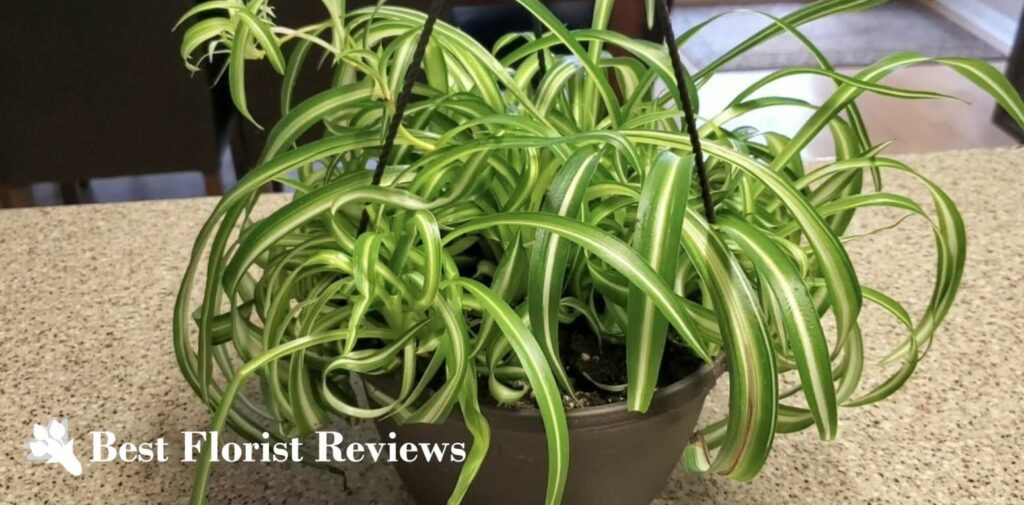

The popular Bonnie spider plant has a different version known as the Chlorophytum comosum ‘Variegated Bonnie.’
Whereas the former has plain green leaves, the latter sports dark-green leaves.
However, both of them are curled and have a white or light-yellow stripe running down their foliage’s center.
Many people use them to introduce colors in their home decor or unnoticed parts of the house.
The two species grow commonly in the hot and humid regions of Africa.
The variegated spider plant prefers partial sun. Therefore, it’s best placed close to south or east-facing windows.
To get the most nutrients and proper hydration, it also needs a well-draining potting mix. Water it only when the top 2 in. of its soil has dried.
Since it can get to be untidy in a few years, you can cut the foliage from the base of the plant. Use only clean and sharp scissors or pruners to avoid harming it.
8) Green Spider Plant
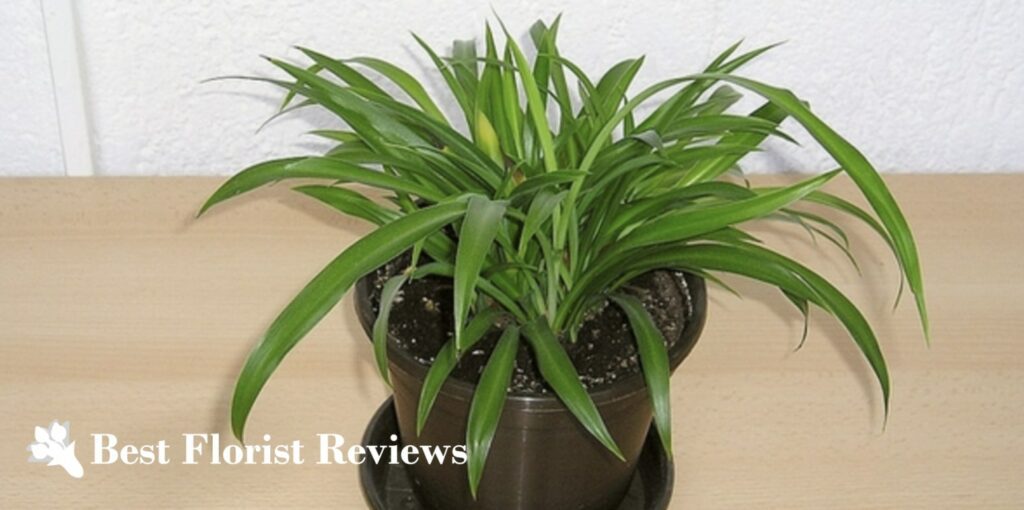

Most spider plants come in variegated colors, but the stems and leaves of the green spider plant (Chlorophytum comosum ‘Solid Green’) uniquely come in pure-green.
Though lots of homeowners prefer this traditional color in their houses, the variety is rarer and more expensive
It grows lush and large that can reach a mature height of 24 in. as a houseplant. It’s also very easy to grow and maintain.
Like other spider plants, you can grow the green spider plant in garden beds, shelves, pots, or hanging baskets.
As opposed to other Chlorophytum comosum, it needs less light to thrive. Note that it needs to be given partial sunlight.
It needs once a week watering, but allow the soil to dry out beforehand. Otherwise, it may be prone to overwatering and heavily damaging root rot.
Having thick and vigorous roots, the green spider plant will benefit from repotting every 1 or 2 years.
9) Vittatum Spider Plant
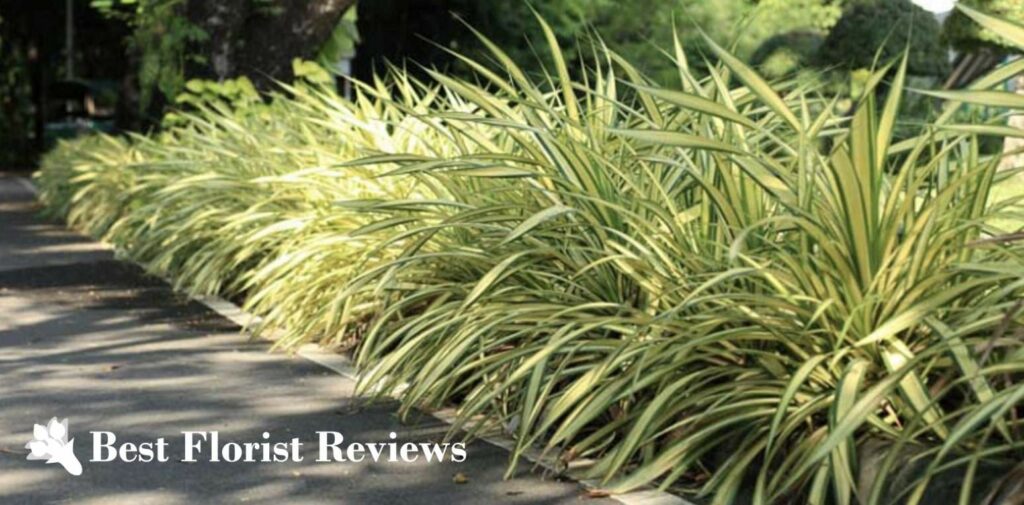

Another garden-favorite Chlorophytum cultivar is the Vittatum spider plant (Chlorophytum comosum ‘Vittatum’).
This plant originates from Southern and Western Africa and exhibits long, sharp, and grassy foliage with a large yellow band in the center.
As with its leaf curvature, it’s only very slight compared to its relatives including Ocean and Solid Green spider plants.
Its max height and spread are relatively high at 24 in., making it fit as border and garden bed plants.
It thrives mostly in partial sun but can also tolerate some direct sun, partial shade, and low-lit surroundings.
Besides that, the Vittatum plant can live in cooler temperatures of 55 to 75℉.
During its growing season from early spring to fall, it needs frequent watering once a week.
However, the plant owner should reduce watering and fertilizing this spider plant variety in the winter.
10) Atlantic Spider Plant
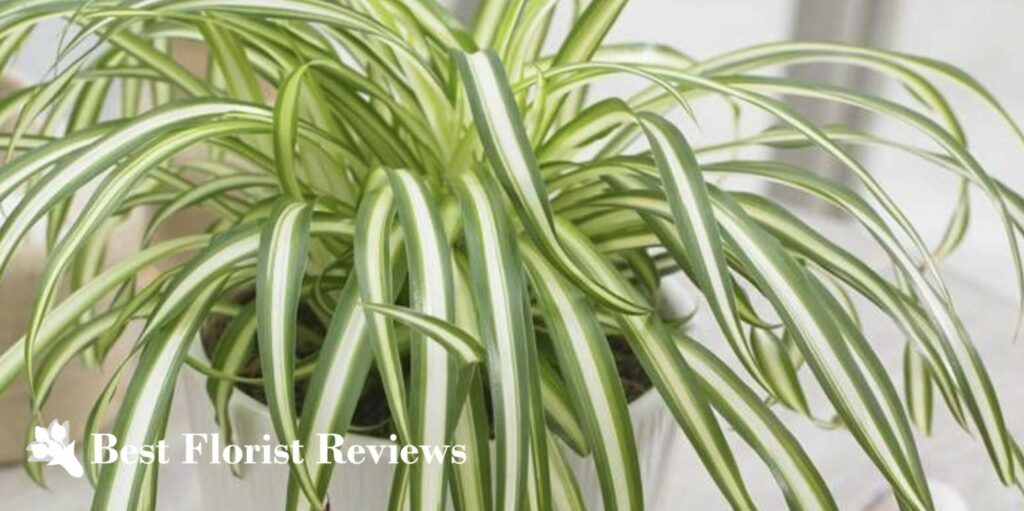

The Atlantic spider plant (Chlorophytum comosum ‘Atlantic’) is a beautiful cultivar of the curly spider plant.
It has medium-green foliage with a silver-white center strip. It has a slight curl or waviness too.
This variety grows along warm and humid coastal areas in South Africa.
Unlike other spider plant varieties, it doesn’t grow very tall—only between 4 and 8 in. tall after several years.
Atlantic spider plants are very easy to maintain. They enjoy partial sun, moist soil, and warm temperatures ideally around 64 to 77℉. They also need regular watering once every week.
Be careful not to overwater them because they don’t like to sit in wet soil which can affect their growth. Water them only until the soil is moist.
Also, this plant looks charming in hanging baskets on the porch, in the garden, or indoors. Best of all, it’s a great air-purifying plant.



